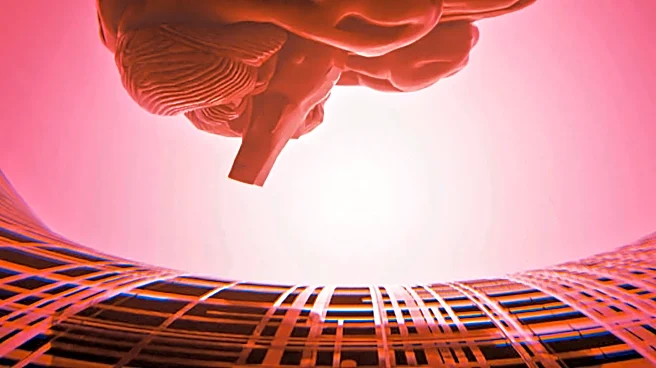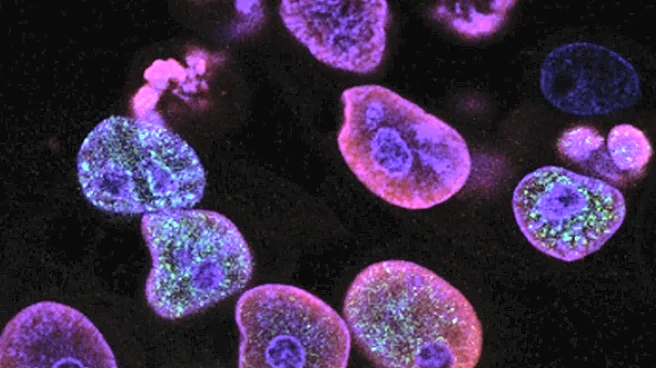What is the story about?
What's Happening?
A recent study has utilized single-cell RNA sequencing to explore the immune landscape in patients with primary open-angle glaucoma (POAG). The research involved analyzing peripheral blood mononuclear cells (PBMCs) from 110 POAG patients and 110 healthy controls, revealing significant alterations in immune cell composition. Notably, POAG patients exhibited increased proportions of CD4+ T cells and myeloid cells, while CD8+ T cells and NK cells were reduced. The study identified two main gene modules: one downregulated in POAG, associated with signaling pathways like PKN1, and another upregulated, linked to chemical stimulus detection and adaptive immune responses. These findings suggest a complex immunological landscape in POAG, characterized by enhanced regulatory and memory T-cell responses and diminished naive and cytotoxic T-cell populations.
Why It's Important?
The study's findings have significant implications for understanding the pathogenesis of POAG, a leading cause of blindness. The observed immune cell remodeling suggests that POAG may involve systemic immune dysregulation, potentially contributing to retinal neurodegeneration. The alterations in immune cell composition and gene expression could inform the development of targeted therapies aimed at modulating immune responses to preserve vision. Additionally, the study highlights the potential for using immune cell profiles as biomarkers for POAG diagnosis and progression, offering new avenues for personalized medicine in ophthalmology.
What's Next?
Future research may focus on validating these findings in larger and more diverse populations to confirm the role of immune dysregulation in POAG. Investigating the causal relationships between genetic variants, immune cell remodeling, and POAG susceptibility could provide deeper insights into disease mechanisms. Moreover, exploring therapeutic strategies that target specific immune pathways may offer promising interventions to mitigate glaucomatous damage and preserve retinal function.
Beyond the Headlines
The study underscores the importance of considering systemic immune alterations in the context of ocular diseases. The dual-polarized signaling landscape observed in POAG patients, with concurrent suppression of core cytokines and selective activation of inflammatory and neuroprotective pathways, may reflect broader immune adaptation processes. This highlights the need for a holistic approach to understanding and treating POAG, considering both local and systemic factors.
AI Generated Content
Do you find this article useful?













